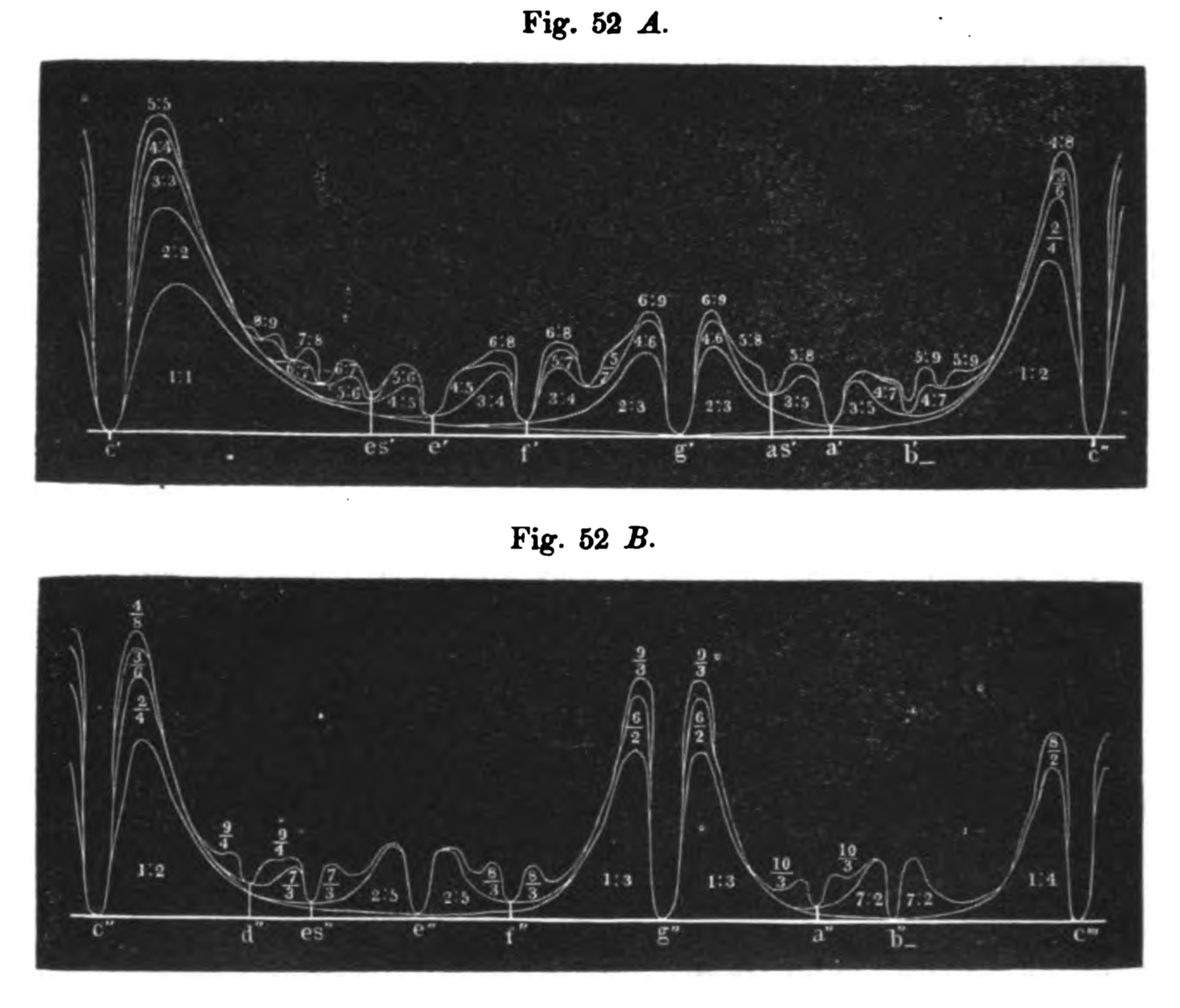

Harmonic intervals: a quest over centuries in the example of the third
Why do we perceive some intervals as consonant with a pleasant sound and other intervals not? A music instrument does not only play a plain sine wave but contains overtones, and these overtones follow a phycial pattern. And therefore the overtones of a tone have to match also the intervals tone.
In ancient Greek and Roman music, the third was not acceptable and only in end of the ten eleven twelfth century by „Franco’s von Cöln“ it was accepted as an unvollkommene consonant. «Der Grund hiervon mag darin zu suchen sein, dass die Theorie der Musik bei den classischen Völkern und im Mittelalter sich hauptsächlich am Gesange der Männerstimmen entwickelt hat, und in so tiefer Lage die Terzen in der That nicht besonders gut klingen. Damit hängt es denn wohl zusammen, dass man auch die richtige Stimmung der Terzen nicht fand, und die sogenannte pythagoräische Terz 64:81 bis gegen das Ende des Mittelalters als die normale betrachtet wurde.» Helmholtz page 289.

Die Lehre von den Tonempfindungen als physiologische Grundlage für die Theorie der Musik von H. Helmholtz. play.google.com/store/books/details?id=nOosAAAAYAAJ Zweite Abtheilung. Zehnter Abschnitt Schwebungen der Obertöne.

